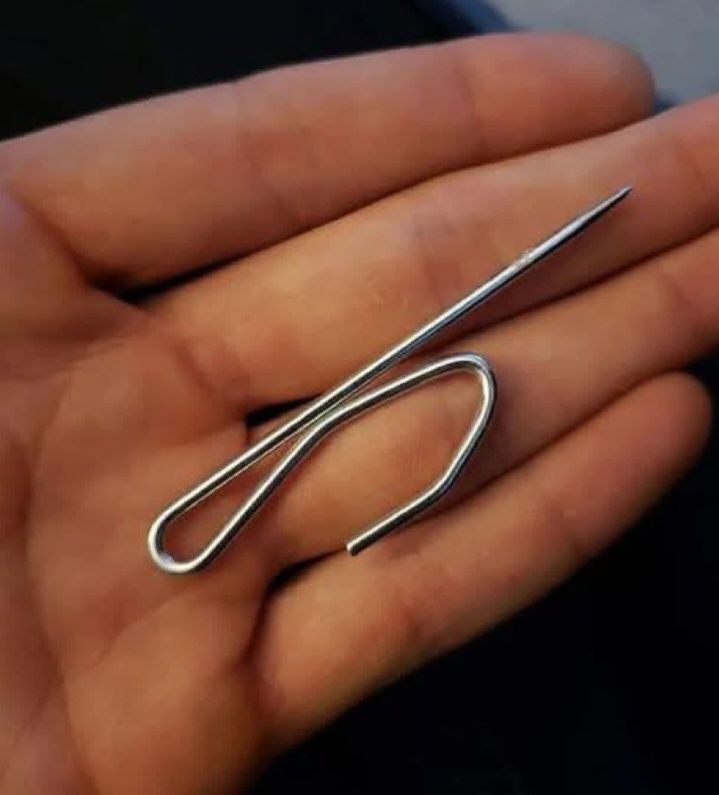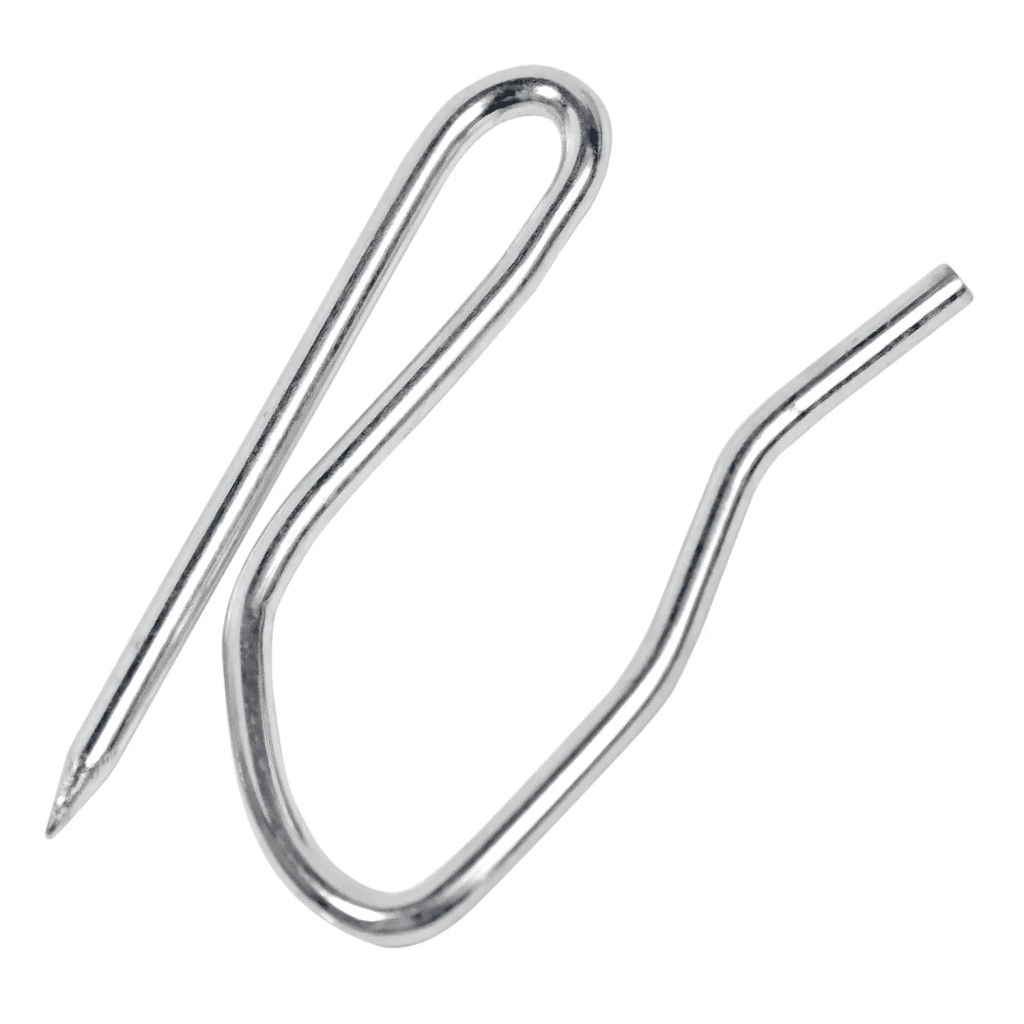Understanding the Curtain Hook: The Unseen Hero Behind Your Curtains
When we think about curtains, we often focus on their fabric, color, or how they tie the room together. But have you ever stopped to consider the tiny component that plays a crucial role in making sure your curtains hang just right? Yes, we’re talking about the curtain hook—a simple yet indispensable accessory that most people overlook. But what exactly is it, and how does it work? Let’s dive into this humble hero of home décor and discover why it’s essential for the perfect curtain setup.

What Exactly is a Curtain Hook?
At first glance, a curtain hook might seem like an unimportant piece of hardware, but it serves a vital function. Typically made of metal, these hooks come in the shape of an “S” or curve, allowing them to attach curtains securely to a rod or a ring. The design of these hooks ensures that curtains can be easily opened and closed, adding both function and convenience to your window treatment setup.
Characteristics of the Curtain Hook
While the curtain hook might seem simple, its design is meticulously crafted for optimal performance. Here are the defining features:
- S-Shape Design: The hook typically has an “S” shape, which allows it to easily curve around a curtain rod or ring.
- Pointed End: One end of the hook is pointed, allowing it to pierce through the fabric of the curtain—particularly useful for curtains with folds or pleats.
- Curved End: The other end of the hook is curved to securely hold the curtain in place on the rod or ring, ensuring that it stays in position.
This design is what makes the curtain hook so effective. It offers a seamless blend of both flexibility and stability, allowing curtains to be easily adjusted or moved while still staying firmly in place.
Video : How to use Dritz Pin-On Drapery Hooks
Why Curtain Hooks are Essential for Heavy and Pleated Curtains
When it comes to heavy fabric curtains or pleated curtains, the use of curtain hooks becomes even more crucial. These types of curtains can be cumbersome, and simply hanging them with standard rings or rods can lead to issues like uneven hanging or difficulty in adjusting the curtains. Curtain hooks provide a simple solution to these problems by:
- Distributing Weight Evenly: For heavy curtains, these hooks help distribute the weight evenly across the fabric, preventing sagging or pulling.
- Allowing Smooth Movement: Since pleated curtains have folds, curtain hooks allow them to slide smoothly across the rod, preventing friction or snags.
- Ensuring Durability: Heavy curtains often need to be moved frequently to let in light or offer privacy. Curtain hooks are designed to handle this daily wear and tear without breaking or getting deformed.
How to Use a Curtain Hook
The curtain hook is incredibly easy to use once you understand its function. Here’s a simple step-by-step guide:
- Insert the Pointed End into the Curtain: Take the pointed end of the hook and pierce it through the fabric. For pleated curtains, you would place the hook into the fabric between the folds.
- Attach the Curved End to the Rod or Ring: After securing the fabric with the pointed end, simply hook the curved end onto the curtain rod or the curtain rings.
- Adjust the Hooks for Even Spacing: If needed, adjust the hooks along the fabric to ensure that the curtains hang evenly. This is particularly important for pleated curtains to maintain their symmetrical appearance.

And just like that, your curtains are secured and ready to function smoothly. Whether you’re drawing them closed for privacy or letting the sunlight flood your room, the curtain hook ensures that the fabric stays in place without hassle.
Benefits of Using Curtain Hooks
While it might seem like a small detail, using curtain hooks offers several advantages:
- Enhanced Aesthetics: With the right curtain hooks, you can achieve a clean, professional look, making your curtains appear more tailored and well-fitted.
- Improved Durability: Curtain hooks help reduce stress on the fabric, ensuring that the curtains last longer and don’t wear out prematurely.
- Ease of Use: The hooks allow for smooth opening and closing of curtains, even heavy or pleated types, without difficulty.
- Flexibility: Curtain hooks can be easily adjusted, making them ideal for curtains of varying lengths or styles.
Types of Curtain Hooks: Which One is Right for You?
Not all curtain hooks are the same. Depending on your needs, you might want to choose from different types of curtain hooks. Here are a few popular options:
- Standard Metal Curtain Hooks: These are the most common type of hooks. They are simple, effective, and often come in packs that include everything you need for hanging curtains.
- Plastic Curtain Hooks: These are lighter and often more affordable than metal hooks. They are ideal for lighter curtains or when budget is a concern.
- Decorative Curtain Hooks: If you’re looking for a more stylish look, decorative hooks are available in various finishes, such as brass or chrome. These can add a touch of elegance to your curtains.
- Roller Hooks: For curtains that need to slide effortlessly, roller hooks provide extra smooth movement, especially useful for heavy or thick curtains.
Video : How to use Dritz Pleater Hooks (short)
When choosing a curtain hook, make sure to consider the weight of your curtains and the type of rod or rings you are using. Heavier curtains need stronger hooks, while lighter fabrics can do well with simpler, more affordable options.
Conclusion: The Unsung Hero of Your Window Dressing
It’s easy to overlook something as small as a curtain hook, but this simple piece of hardware is essential for keeping your curtains in place and allowing them to function properly. Whether you’re using them for heavy, pleated curtains or simply to secure your window treatments, curtain hooks ensure that your curtains hang beautifully and move smoothly.
So, the next time you pull your curtains open or close them, take a moment to appreciate the quiet effectiveness of the curtain hook. It may seem simple, but it’s the unsung hero that keeps everything in place—giving your home that perfect finishing touch.